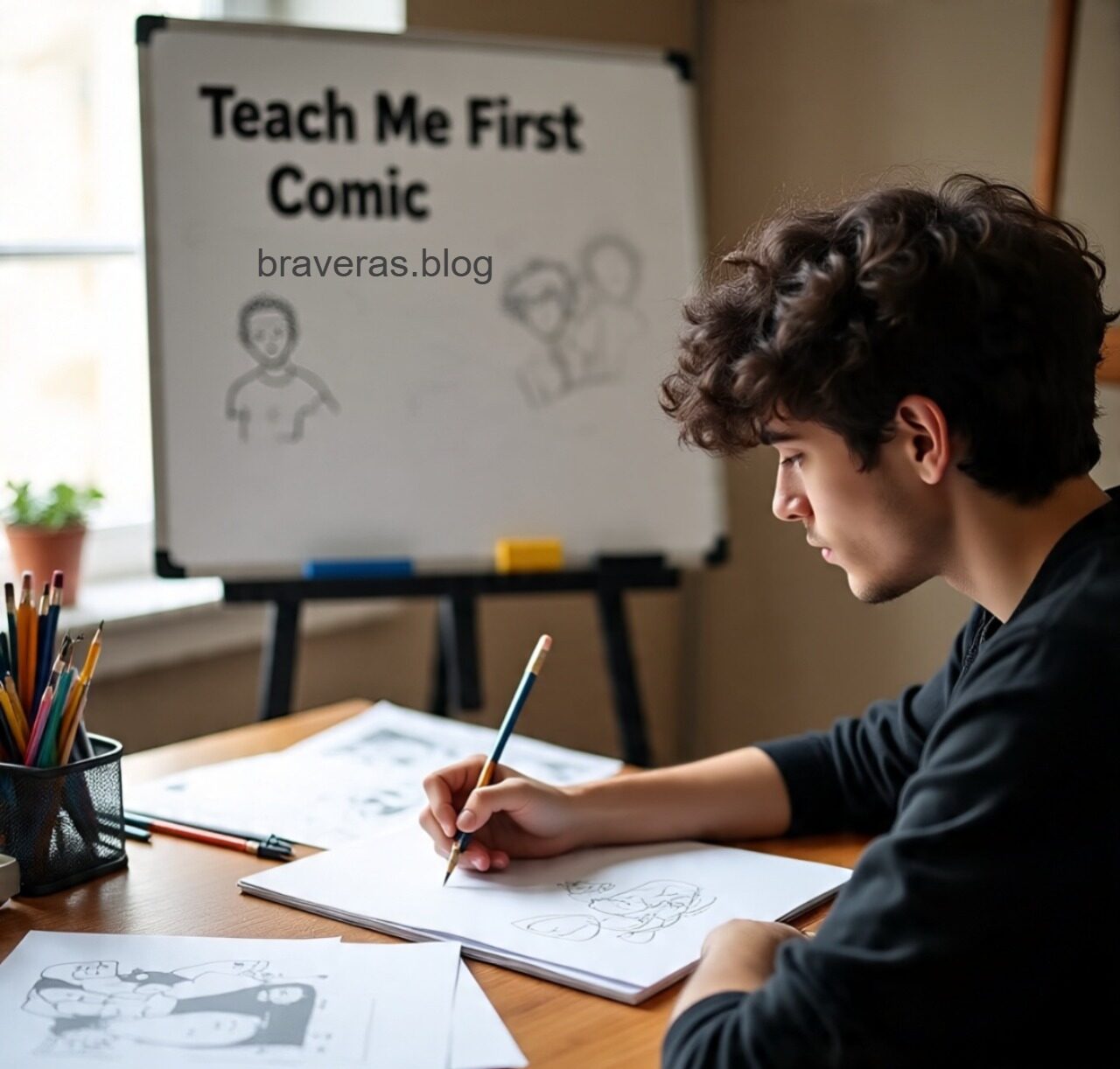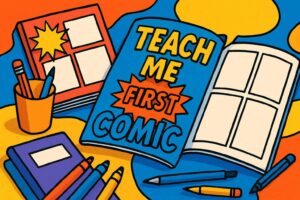
The Essence of Comics: What Every Beginner Should Know
Comics represent a distinctive form of storytelling that intertwines visuals and text, creating a narrative experience unlike any other. For beginners venturing into this captivating medium, grasping the fundamental elements that constitute comics is essential. At its core, the comic format utilizes sequential art—images presented in a particular order to convey a story. This integration of illustrations and written dialogue captures the reader’s imagination, allowing for a unique engagement that traditional prose may not achieve.
A key aspect to understand when embarking on your journey is the narrative structure inherent in Teach Me First Comic. Story arcs are typically segmented into panels, each acting as a snapshot of the overall narrative progression. This structure not only dictates pacing but also controls the flow of information, allowing readers to absorb details visually and textually. Additionally, terminology such as “gutter,” which denotes the space between panels, plays a crucial role in guiding the reader’s understanding of connection and transition between scenes.
Another significant element is the variety of styles and genres within the comic realm. From superhero narratives filled with action and dilemmas to slice-of-life stories that capture everyday experiences, the breadth of content is vast. Different styles—be it manga, graphic novels, or webcomics—offer a plethora of artistic expressions. As a beginner, familiarizing yourself with different types of comics can enhance your reading experience and broaden your appreciation for the medium.
Ultimately, the essence of comics lies in their ability to tell stories through both illustrations and words. Understanding the art of storytelling within this medium will undoubtedly enrich your journey. Recognizing the interplay between visuals and text will be a vital skill as you explore the fascinating world of comics that awaits you.
Getting Started: Essential Tools for Creating Your First Comic
Embarking on the journey to create your first comic can be an exciting yet daunting task. To help you navigate this creative endeavor, it is crucial to equip yourself with the essential tools and materials that will facilitate the process. Whether you prefer traditional methods or digital platforms, having the right resources can greatly enhance your comic-making experience.
First and foremost, choosing the right type of paper is vital. For those who enjoy hand-drawing, consider using smooth bristol board or sketch paper, as these surfaces allow for cleaner lines and better ink handling. When it comes to pens, a selection of fine liners in various sizes can provide the versatility needed for different line weights, which is essential for comic art. Additionally, incorporating pencils for initial sketches can help you refine your ideas before committing to the final inked versions.
For those inclined towards digital creation, exploring software options such as Adobe Photoshop, Clip Studio Paint, or Procreate can be beneficial. These programs come equipped with various brushes and effects that can mimic traditional art while offering the convenience of digital editing. A graphic tablet can further enhance your ability to create detailed and precise artwork, allowing for a smoother workflow.
Moreover, understanding the importance of sketching, storyboarding, and character development is integral to your comic creation process. Begin by doodling your ideas, which can lead to the formation of characters and scenes. Storyboarding helps visualize the narrative flow, ensuring that your comic maintains coherence. By honing these skills, you will build a solid foundation for crafting captivating comic narratives. Remember, as you learn and develop, practice will enhance your abilities, bringing your creative vision to life.

Crafting Your Story: Tips for Writing Engaging Comic Scripts
Creating compelling comic scripts is a nuanced process that requires attention to detail and a keen understanding of audience engagement. The foundation of a successful comic starts with a well-structured script that incorporates both dialogue and visual elements. To teach you first comic writing, it’s crucial to outline the basic elements such as panel descriptions, character dialogues, and pacing. A traditional comic script typically includes scene breakdowns that indicate what happens in each panel, the dialogue that will accompany the artwork, and detailed descriptions that guide the artist in portraying the narrative accurately.
Pacing is particularly significant in comics, as the arrangement of panels affects the reader’s experience and enjoyment. A rapid sequence may build suspense, while slower, more detailed panels can deepen emotional resonance. To enhance readability, it’s advisable to consider the rhythm of the dialogue and how it interacts with the visuals to facilitate the flow of the story. Each line of dialogue should serve a purpose, either to develop character or advance the plot, making it essential for writers to craft tight, impactful lines.
Furthermore, creating relatable themes and nuanced character arcs is vital for engaging readers. Characters should experience growth or change, often as a response to conflicts that stir emotional investment. Conflict resolutions can take various forms, driving the narrative and allowing for meaningful reflections on real-life challenges. By artfully intertwining plot with character development and visual storytelling, writers can elevate their comics from mere entertainment to thought-provoking experiences. With these principles in mind, beginners can effectively teach themselves the essentials of comic scriptwriting, unlocking the potential to create visually engaging and narratively satisfying works.
Sharing Your Comic: From Self-Publishing to Online Platforms
Once you have completed your Teach Me First Comic, the next critical step is to consider how to share it with the world. The evolution of publishing has opened numerous avenues for creators, particularly through self-publishing and the digital landscape. Self-publishing allows you the freedom to control your content and distribution, and creators can choose between print and digital formats. Print publishing can provide a tangible product that some readers still appreciate, while digital publishing offers a cost-effective and accessible method to reach a larger audience.
For those looking to enter the digital realm, numerous platforms are ready to host and showcase your work. Websites like Webtoon and Tapas specialize in comic-sharing and have established audiences eager to explore new content. Using these platforms effectively involves understanding their respective submission guidelines and audience demographics. Engaging with readers through comments and feedback can also foster a loyal community around your comic, transforming casual readers into dedicated fans.
Additionally, leveraging social media plays a pivotal role in promoting your comic. Platforms such as Twitter, Instagram, and TikTok allow creators to share snippets of their work or behind-the-scenes processes. Engaging in art challenges or using popular hashtags can increase visibility among potential readers. It’s essential to build a brand around your comic; consistent themes in your social media presence will help establish recognition. Also, consider creating a dedicated website or blog to showcase your comic and provide updates, which further enhances your online presence.
Marketing your comic can seem daunting, but it is an integral part of the creative journey. Networking with other comic creators, joining online communities, and participating in comic events can provide valuable exposure and resources. By exploring both self-publishing options and digital platforms, as well as mastering the art of effective promotion, new creators can confidently transition from being mere creators to celebrated contributors within the vibrant comic community.